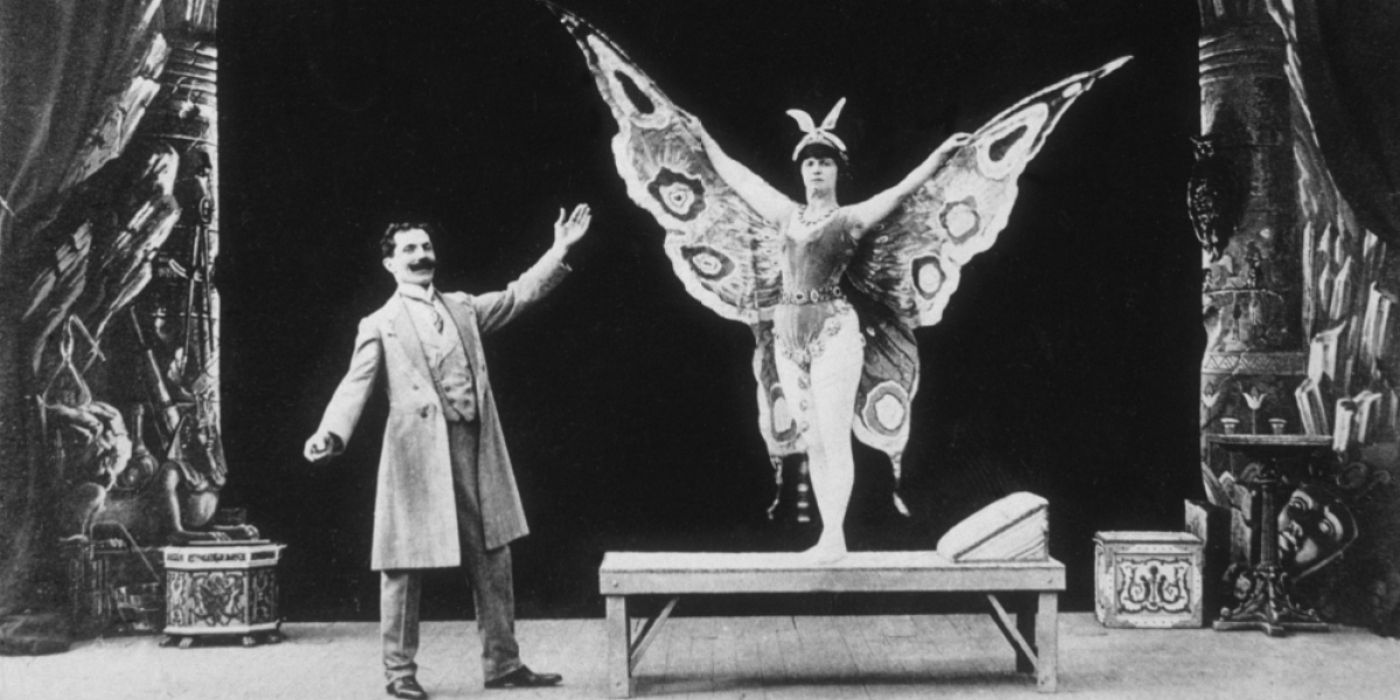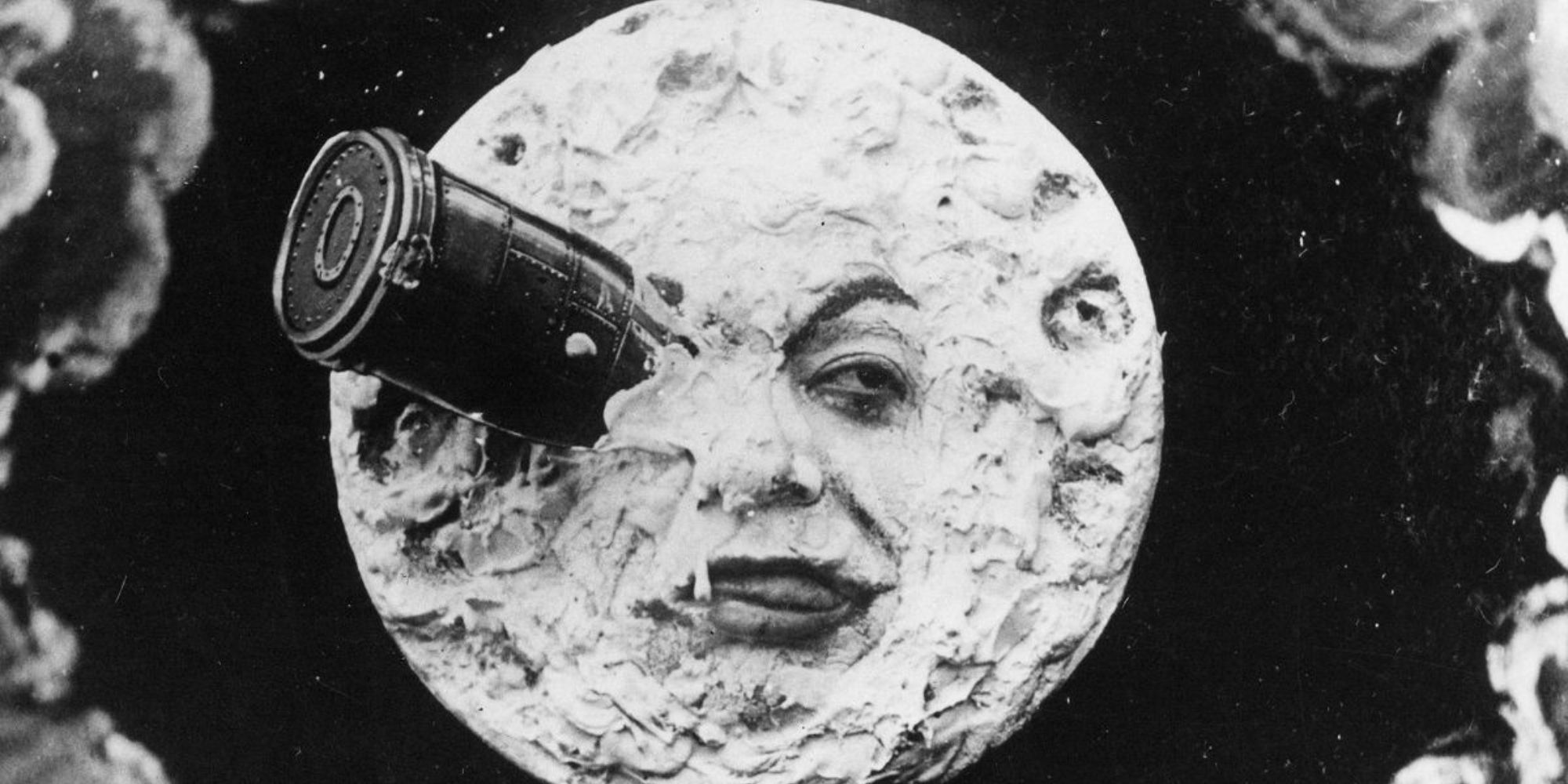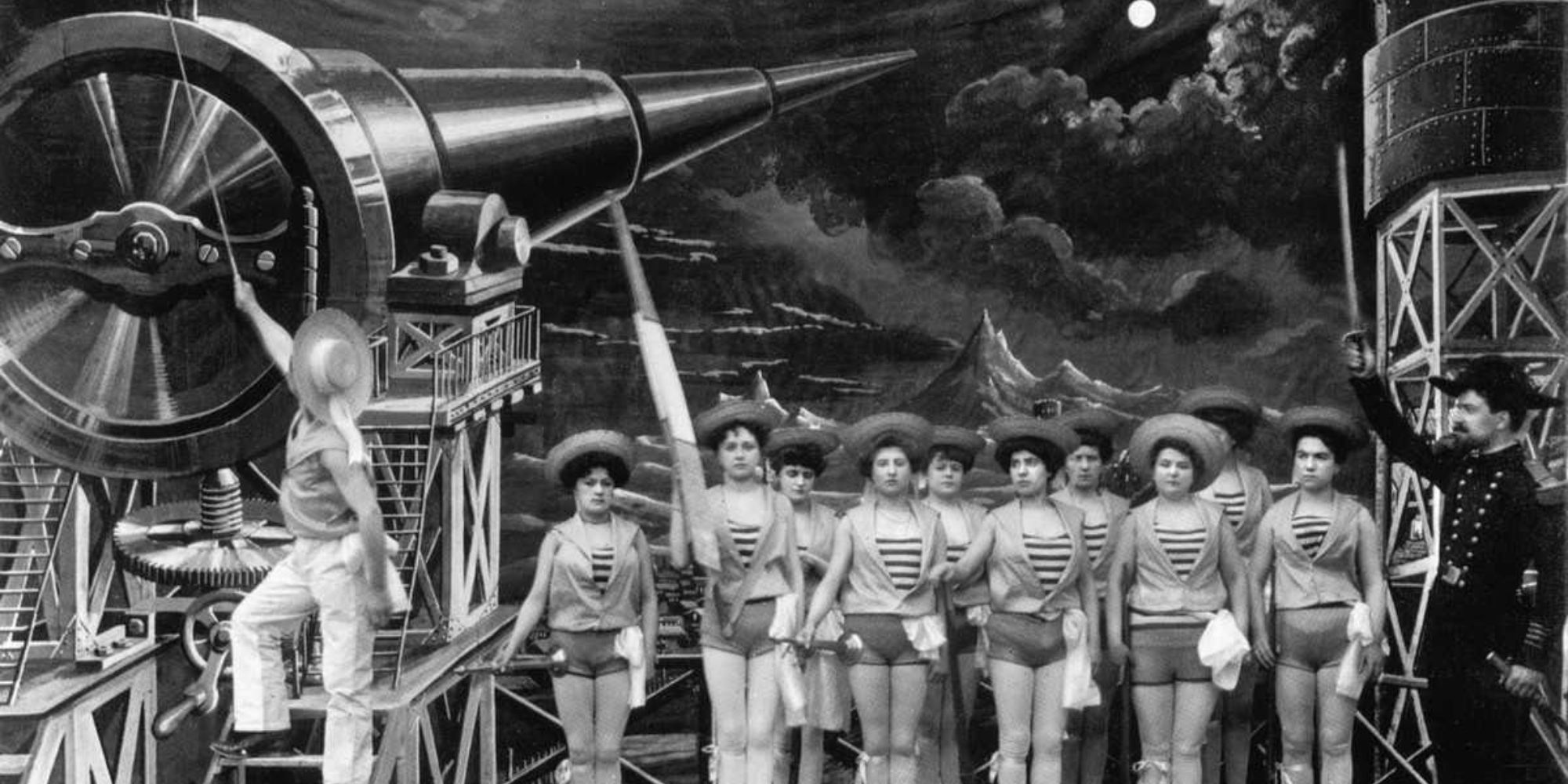(By some accounts, also the first.)
In fact, CGI-fatigued audiences might be surprised at how effective they continue to be.
Maybe the only thing more interesting thanA Trip to the Moonis its creator.

It shouldn’t surprise you to hear that Melies was also an illusionist.
We still fall for it today.
(Previously, everyone had to peer through the hole of a kinetoscope.)

Image via Getty Images
He instantly fell in love, attempting to buy one of the brothers’ “Cinematographe” machines.
Turned down, he took matters into his own hands, obtaining a similar mechanism from another manufacturer.
There was just one problem: It could only project movies, not film them.

Image via Star Film Company
Melies aimed to change all that.
He wanted to bring to life the sci-fi stories ofJules Verne, to create fantastical worlds and impossible beings.
Melies just kept expanding, building his own glass-encased studio in France.

(He hoped it would help with more natural light.)
But his greatest accomplishment would be filmed in 1902:A Trip to the Moon.
They jostle excitedly and gesticulate wildly, already showing the signs of Melies' fantastical design style.
His sets are richly painted, the actors almost blending in.
It’s almost like watching a painting come to life.
The men, who turn out to be scientists, are taking a rocket ship to space.
Melies himself plays their leader.
Then, through the night sky, the man in the moon edges closer to the camera.
Surrounded by a crystalline surface, they sleep.
Far from a newsreel, the film explores themes of imperialism, space travel, and beauty.
It’s a must-watch for any fan of the cinematic arts.
After all, it did influence them greatly.
Melies' techniques allowed other directors to improve upon their own.
(As well as adapt his.)
But that doesn’t mean his career was safe.
(Not that that’s surprising, considering Edison’s history of invention theft.)
But the real, final blow came when he lost his beloved studio.
In a way, it almost seems fitting: These dreams were too fleeting to last.
In fact, they already have been.
Without it, today’s cinema would look much less magical.